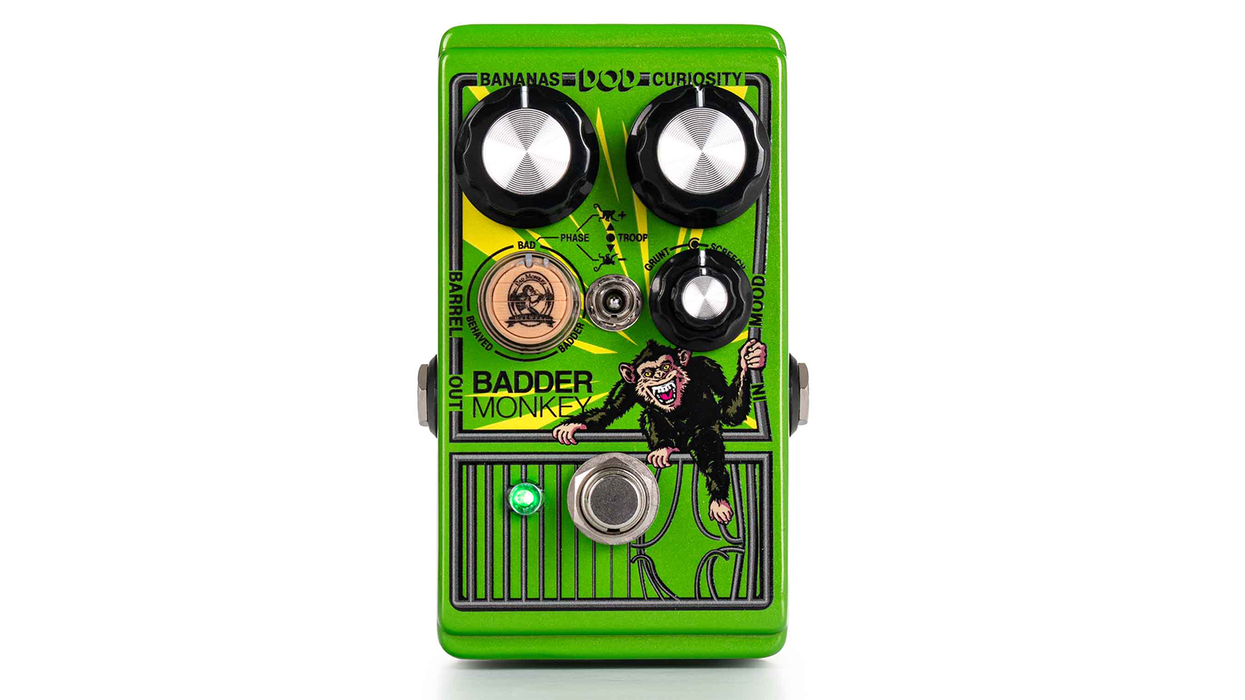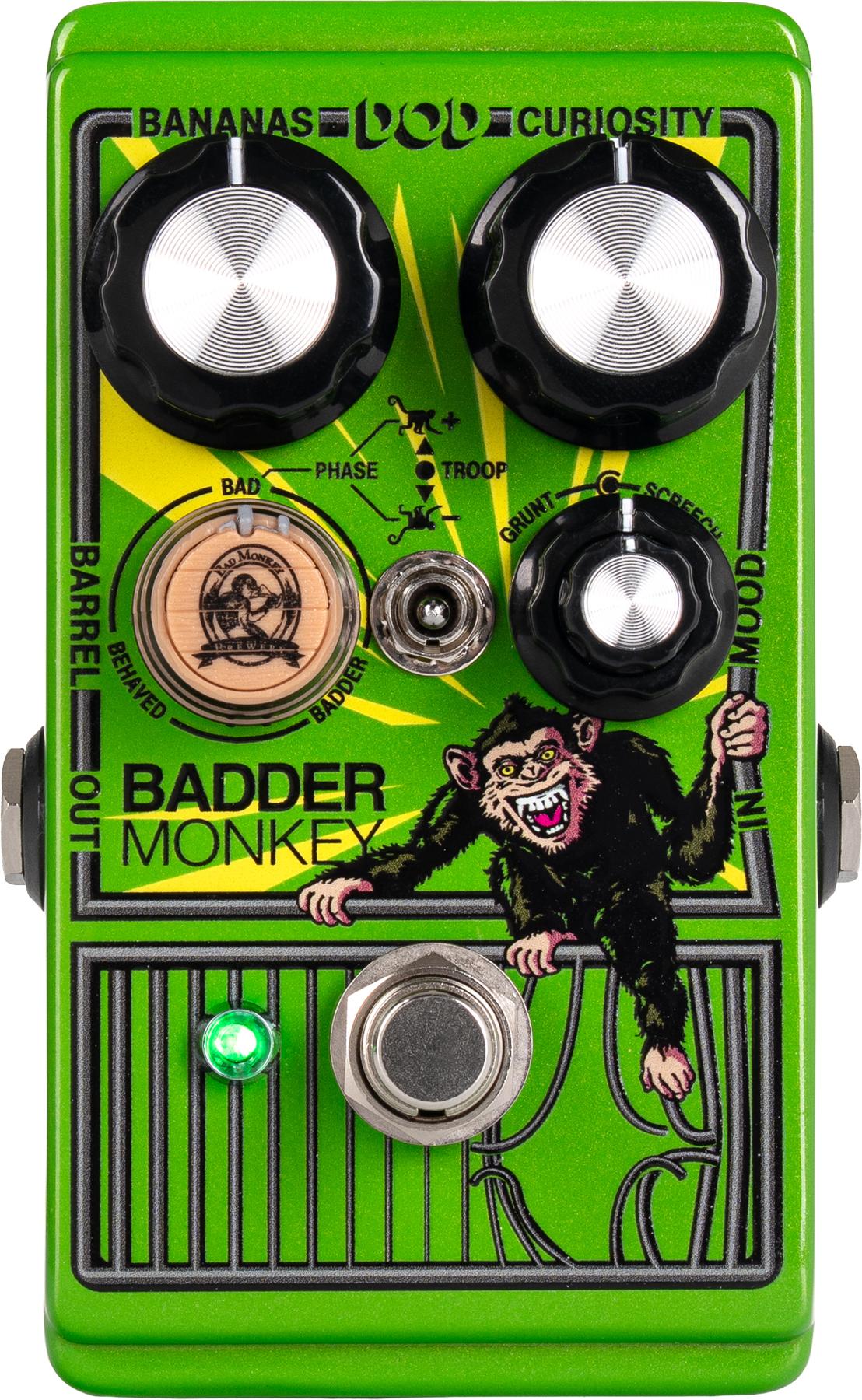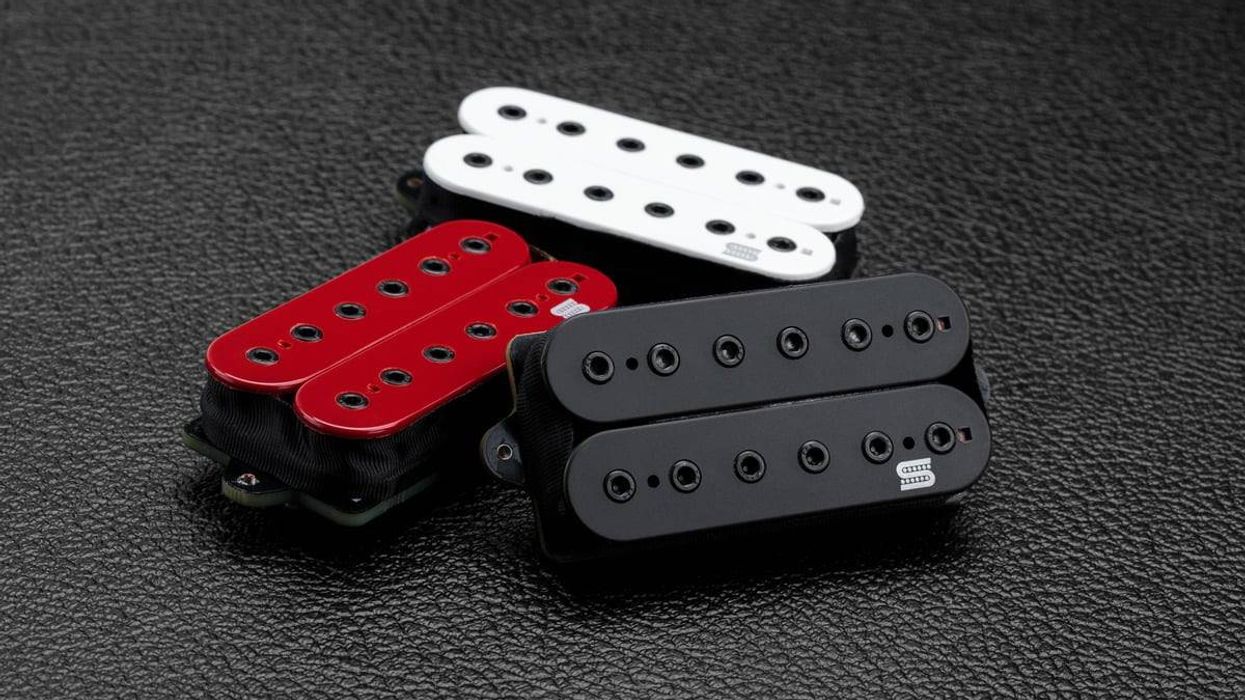This month in our Signal Chain column,
we’re going to take a short detour to talk
about the art of listening. Everyone will
agree that listening is important when it
comes to finding your ideal tone, but not
many people know how to listen “better.”
One of the things you can do to sharpen
your listening skills is to carefully observe
how a microphone “hears” a given signal
source, and how it translates that electrical
energy into a sound or tone you desire. I
started to do exactly this some 16 years
ago when I initially got interested in the
recording arts, and continue to do it today.
It’s important that you start recording as soon
as you can, because doing so will open up
a brand new world and help you attain an
entirely different set of listening skills. Those
of you in a band will likely have an advantage
here, as one of the benefits of playing with
other people is the fact that you can (and
quite frankly, should) record every band
rehearsal. There are two good reasons for
this. First, you’ll catch all the happy accidents
that occur when you’re working songs out
(which you can use as a reference later on),
and second, you can learn valuable lessons
in mic placement and capturing a great band
sound with only a few mics.
I found the best method for determining
actual microphone placement is to use a
pair of headphones and carefully listen to
the sound of the microphone as you walk
around the room you’re recording in. Once
you find the sweet spot where the first mic
sounds good, place the second mic on the
opposite side of the stereo field—this is
one of the key elements to capturing all
the details and nuances produced by your
band. In my own situation, I found out that
recording our band in a small garage with a
low ceiling was interesting, because the two
spot mics ended up being staggered—the
left microphone was placed some eight
feet from the drum kit, while the right
microphone sounded really great around
12-14 feet away from the kit. It was at this
point that I could clearly hear the hi-hat,
cymbals, and snare drum match up with all
of the other drums in the 12-piece kit our
drummer played.
Once you’ve mastered the art of placement,
you can turn your attention to the mics
themselves. The art of getting great recorded
sounds begins with great microphones. Every
microphone has a sonic personality, and as
such, it can bring quite a bit to the table in
terms of tonal options. Since I have developed
my own personal “default settings” when it
comes to critical listening, I tend to look for
microphones that will make me sound more
like an improved version of what I usually
sound like to begin with. For me, more often
than not this means pulling out a ribbon mic.
Nearly all of the classic records I loved as
a kid were recorded using ribbon-style
microphones, which were some of the earliest
microphones ever designed. Ribbon mics
were Les Paul’s hands-down favorite when he
cut records, due to their open and naturally
accurate sound reproduction. Good bench
references of what these types of microphones
sound like come straight from the Jimi
Hendrix catalog. Eddie Kramer, Hendrix’s
legendary engineer, was known to use ribbon
microphones quite often (the Beyerdynamic M
160 in particular), as did George Martin when
he recorded the Beatles.
Fun fact: It has been said that EMI actually
had very strict rules regarding the distance
you were allowed to place these ribbon
microphones in relation to the source.
George Martin pushed the envelope, and
as a consequence, blew quite a few ribbon
elements by placing them closer to loud
sources than EMI rules permitted. Several
examples of this included the close mic’ing
of both guitar amps and Ringo’s kick drum
with ribbon mics! If you’re looking to
stretch your critical listening muscles a bit,
try putting on a classic Beatles album and
listening for the telltale “pfffftttt” noise that
a ribbon mic makes as it attempts to warn
you it’s too close to the fire. This is a great
exercise that will help take your auditory
chops to the next level.
You might have guessed by now that I own
a couple of ribbon microphones, being
a recording nut. One feature of nearly
all ribbon microphones is the “figure-8”
polar pickup pattern (giving these mics
their “bi-directional” tag), which is ideal
for capturing ambient room sound via
the ribbon’s rear “lobe.” This makes
ribbons highly useful recording tools.
Simple changes in mic placement will
drastically change the overall sound. You
can also record with the rear lobe of the
microphone, giving you a different, brighter
tonal character. It’s a very slick trick that
is bringing ribbon mics back into vogue in
recording environments everywhere.
As I said earlier, every mic has its own sonic
personality, and next time we will drill down
on this topic a little deeper, comparing
three ribbon microphones against each
other and discussing their sonic differences.
Until then, fire up your recording software
or DAW, plug in a few mics, and start
listening carefully. You might be surprised
by what you find.
Dean Farley
is the chief designer of "Snake Oil Brand Strings" (sobstrings.net) and has had a profound influence on the trends in the strings of today.






![Rig Rundown: Russian Circles’ Mike Sullivan [2025]](https://www.premierguitar.com/media-library/youtube.jpg?id=62303631&width=1245&height=700&quality=70&coordinates=0%2C0%2C0%2C0)

















